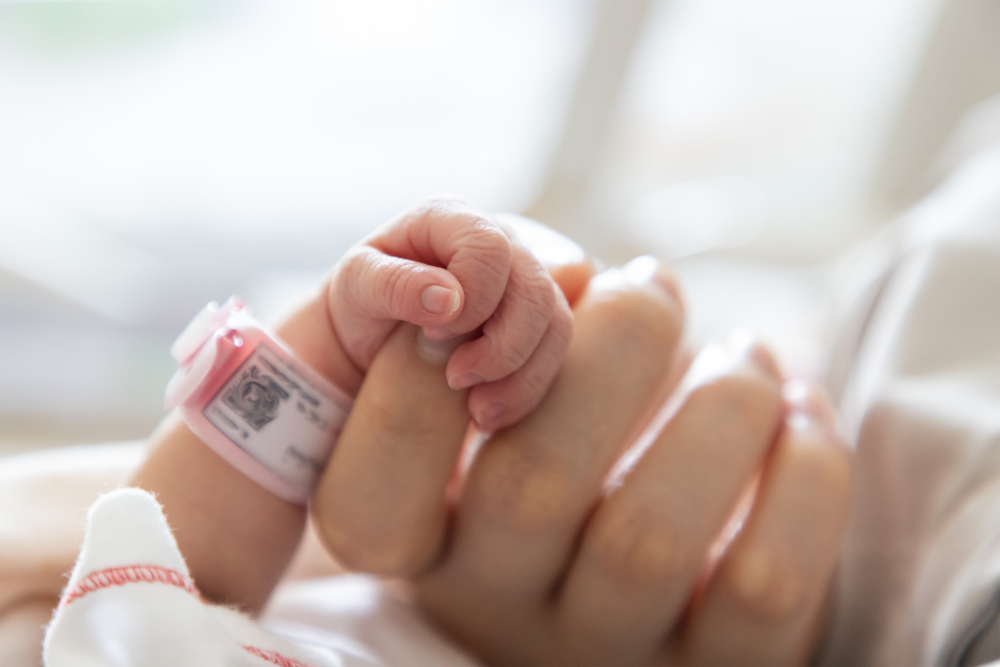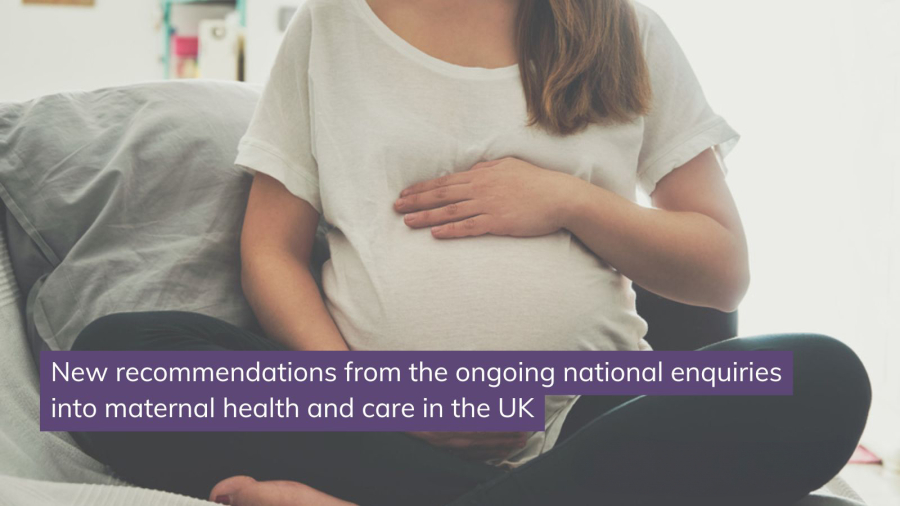Persistent inequalities remain in rates of stillbirth and neonatal deaths in the UK

Published on Monday, 15 July 2024 Post
The MBRRACE-UK collaboration, jointly led by Oxford Population Health's National Perinatal Epidemiology Unit and the University of Leicester's The Infant Mortality and Morbidity Studies (TIMMS) research group, has today published a 'State of the Nation' report on perinatal deaths of babies born in the UK in 2022.
The State of the Nation report is a concise overview of perinatal deaths in the UK focusing on five key areas: perinatal mortality rates in the UK; mortality rates for trusts and health boards; mortality rates by gestational age (weeks of pregnancy completed before birth); mortality rates by ethnicity and socio-economic deprivation; and a description of the causes of perinatal deaths in the UK.
This report focuses on births from 24 completed weeks of pregnancy, but incudes babies born at 22 and 23 completed weeks of pregnancy where rates are presented by gestational age. The figures presented in this report do not include terminations of pregnancy.
Key findings:
- Extended perinatal mortality rates decreased in 2022 to 5.04 deaths per 1,000 total births, following an increase in 2021. Despite the decrease, the rate remains higher than it was in 2019 and 2020;
- The stillbirth rate decreased from 3.53 per 1,000 total births to 3.35 per 1,000 total births. The neonatal mortality rate increased from 1.65 per 1,000 live births to 1.69 per 1,000 live births;
- Wide variation in neonatal mortality rates remained in 2022, with just 21.5% of trusts and health boards having rates that fall within 5% of the average for organisations that provide similar types of care;
- Late fetal loss, stillbirth and neonatal mortality rates decreased in almost all gestational age groups between 2021 and 2022. However, for babies born between 22 and 23 completed weeks' gestational age who died between 8 and 28 days after birth, the mortality rate was 126.1 babies per 1,000 births. This is the highest rate for these babies since MBRRACE-UK began reporting on these numbers in 2014 and the report urges healthcare commissioners to ensure that neonatal intensive care capacity and resources are able to meet demand;
- Inequalities by levels of deprivation continue to persist. Stillbirth rates for babies born to mothers living in the most deprived areas decreased to 4.60 per 1,000 total births, but this rate remains much higher than that for babies born to women living in the least deprived areas (2.61 per 1,000 total births). Neonatal mortality rates for babies born to mothers from the most deprived areas increased for the second year, and are now twice that of babies born to mothers from the least deprived areas (2.38 per 1,000 live births compared with 1.18 per 1,000 live births);
- Despite a decline in stillbirth rates for all ethnic groups, significant ethnic disparities persist. Babies of Asian and Black ethnicity continue to have much higher mortality rates than babies of White ethnicity. Babies of Black ethnicity remain more than twice as likely to be stillborn compared with babies of White ethnicity (Black: 6.19 per 1,000 total births; White: 2.99 per 1,000 total births). Neonatal mortality rates decreased for babies of Black and White ethnicity, with rates for babies of Black ethnicity decreasing after a two-year period of increase. However, neonatal mortality for babies of Asian ethnicity increased for the second year. Babies of both Asian and Black ethnicity continue to have much higher rates of neonatal mortality than babies of White ethnicity (Asian: 2.50 per 1,000 live births; Black: 2.41 per 1,000 live births; White: 1.56 per 1,000 live births);
- The most common causes of stillbirth and neonatal death were unchanged compared with 2021. The cause of death remains unknown for one-third of stillborn babies, with placental issues being the most common cause of death. For neonatal deaths, the most common cause was congenital anomalies, which contributed to one-third of all neonatal deaths.
The next MBRRACE-UK Saving Lives, Improving Mothers' Care confidential enquiry report into maternal deaths in the UK will be published in October 2024. A full confidential enquiry into the deaths of babies born to mothers recently arrived in the UK and experiencing language difficulties will be published in December 2024. The details of the cases presented in the confidential enquiry reports are strictly confidential but the reports will include brief anonymised summaries of the care received by some parents and their babies as illustrative examples.
Definitions
Stillbirth: A baby born at or after 24 completed weeks' gestational age showing no signs of life, irrespective of when the death occurred.
Stillbirth rate: The number of babies who were stillborn as a proportion of all births in that year (shown as the number of stillbirths per 1,000 total births).
Neonatal death: A liveborn baby who died before 28 completed days after birth.
Neonatal mortality rate: The number of babies who were liveborn but died before 28 completed days after birth, as a proportion of all live births in that year (shown as the number of neonatal deaths per 1,000 total births).
Extended perinatal death: A stillbirth or neonatal death.
Extended perinatal mortality rate: The number of stillbirth and neonatal deaths as a proportion of all births in that year (shown as the number of extended perinatal deaths per 1,000 total births)


